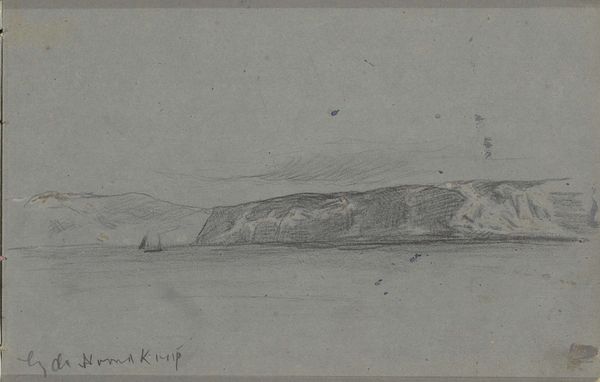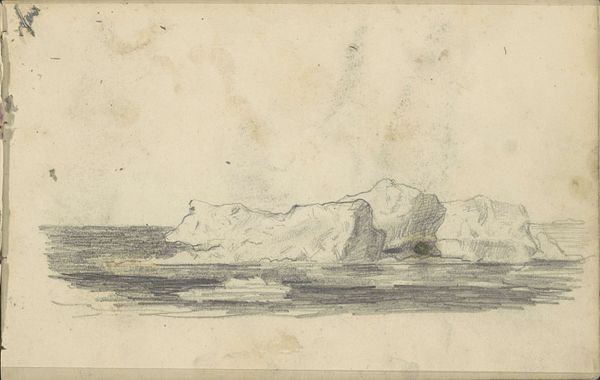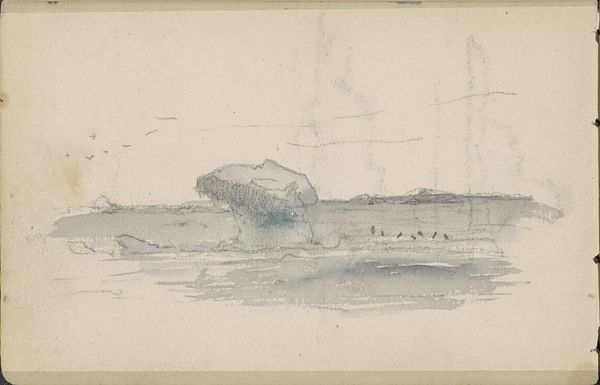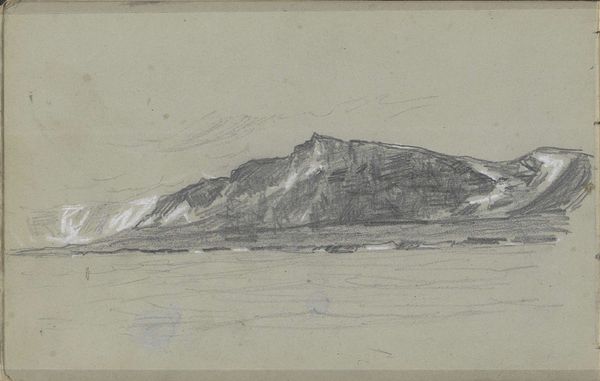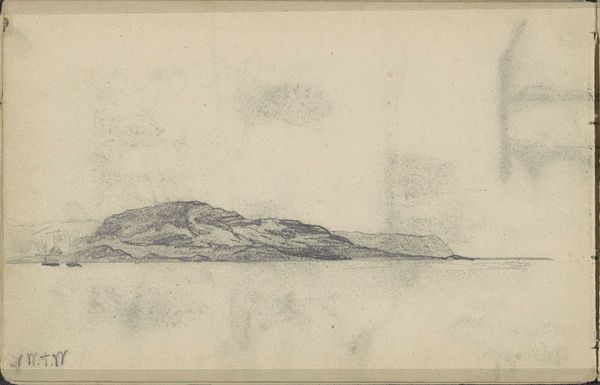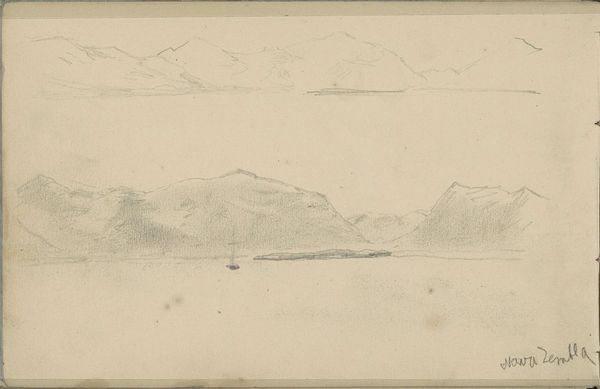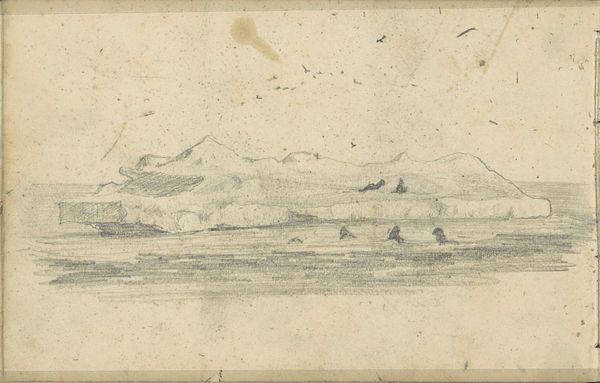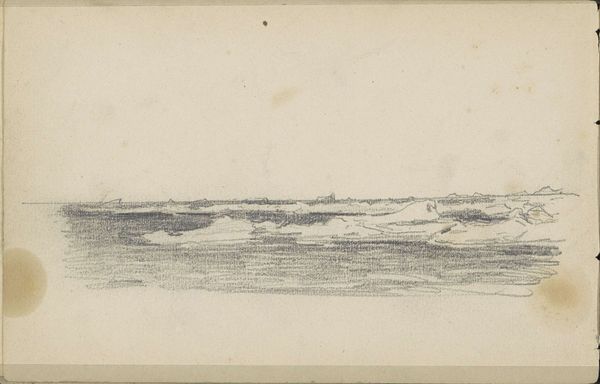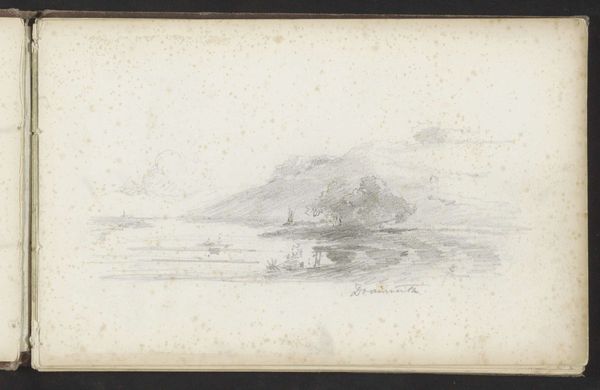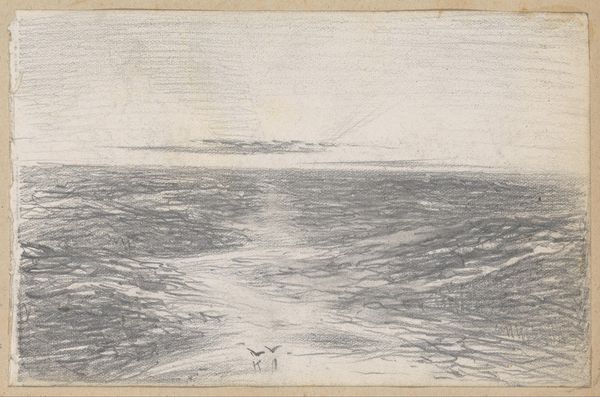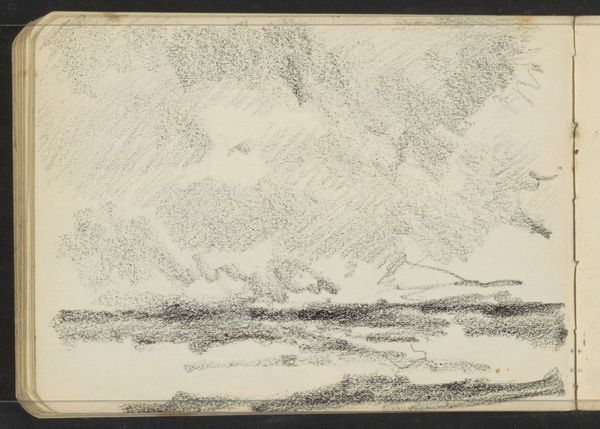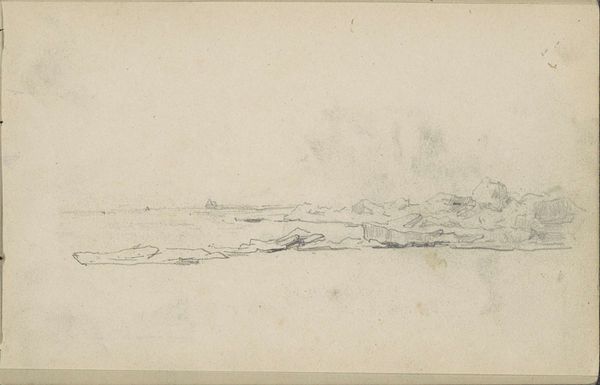
Gezicht op Goesinaja Zemlja (Ganzenland), Nova Zembla Possibly 1880 - 1887
0:00
0:00
louisapol
Rijksmuseum
drawing, pencil
#
drawing
#
pencil sketch
#
landscape
#
pencil
#
northern-renaissance
#
realism
Copyright: Rijks Museum: Open Domain
Curator: The simplicity of this drawing, its minimalist nature, almost vibrates with a kind of quiet intensity, don't you think? Editor: It's…stark. There's a vulnerability in the starkness, in its seeming incompleteness. Curator: Indeed. This is a pencil drawing by Louis Apol, and it is called "Gezicht op Goesinaja Zemlja (Ganzenland), Nova Zembla," dating possibly from between 1880 and 1887. Apol was, of course, celebrated for his winter landscapes. Here, the location depicted is Novaya Zemlya, a Russian archipelago in the Arctic Ocean. Editor: Immediately I see a representation of the Arctic that emphasizes not romance or heroism, but quiet desolation. What sociopolitical factors shaped both the journey and Apol's response through his sketches? How does representing ice shift colonial landscape conventions? Curator: Good point. His depictions often reflected an interest in realism and a desire to capture the authentic atmosphere of the Dutch winter, its unique character. You get that feeling of isolation so palpably, the biting cold perhaps. He uses delicate strokes to render the light on the snow and water. Editor: Apol, in depicting a nearly featureless horizon of snow, implicitly references the perilous expeditions to this very place, Novaya Zemlya. Many suffered hypothermia, scurvy, even death there. The pencil on paper renders that erasure so intensely. I wonder, too, about Apol's own background. What does art making and this rendering specifically communicate regarding the impact of settler colonialism on the landscape? Curator: It's an invitation to consider how we project ourselves onto vastness, perhaps. His journey to render this space must have shifted something within him. Editor: Yes, and for me this subtle landscape challenges viewers to consider the fraught dynamic between humans and the seemingly 'untamable' Arctic, and perhaps interrogate the stories we tell ourselves about "discovery". Curator: He wasn't just documenting a place, but also documenting a feeling. A very profound one I think. Editor: Ultimately it compels a consideration for how seemingly "barren" or "empty" territories are nevertheless profoundly shaped by political violence, by empire. Curator: Yes, it is an image of profound quiet.
Comments
No comments
Be the first to comment and join the conversation on the ultimate creative platform.
